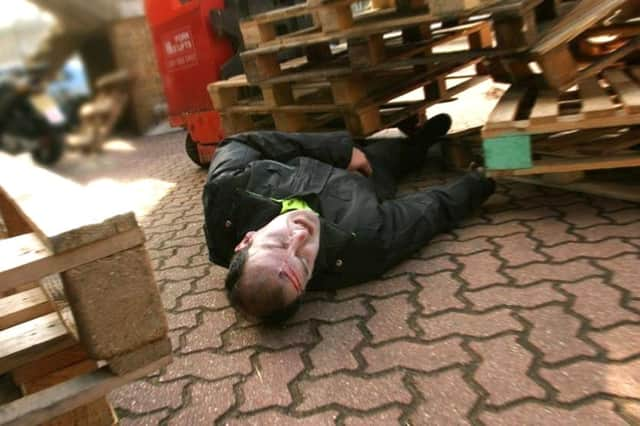FIRST AID: How to deal with someone with a spinal injury


The greatest risk of someone who has a spinal injury is that their spinal cord will be either temporarily or permanently damaged. If this happens, they may lose sensation or power below the injured area.
What to look for:
n Pain in the neck or back at the site of injury
n Irregular shape or twist in the normal curve of the spine
n Tenderness and/or bruising in the skin over the spine
n Movement of limbs may be weak or absent
n Loss of sensation, or abnormal sensations, e.g. burning or tingling
n Loss of bladder and/or bowel control
n Breathing difficulties
What to do:
If they are responsive:
Advertisement
Hide AdAdvertisement
Hide Ad1. Reassure the casualty. Do not move them and tell them not to move, unless they are in immediate danger. Call 999 or 112 for emergency help or ask someone else to call for you
2. Steady and support their head so that their head, neck and spine are in a straight line to try and prevent further damage. To do this, kneel or lie behind their head, resting your elbows on the ground or on your knees to keep your arms steady. Hold each side of their head, spreading your fingers so that you do not cover their ears as they need to be able to hear you. Support their head in this neutral position
3. If there is someone who can help you, ask them to put rolled-up blankets, towels or clothes on either side of the head while you keep the casualty’s head in the neutral position. Continue to support their head until emergency help arrives and can take over, no matter how long it takes for them to come.
4. Keep monitoring their breathing and level of response while waiting for help to arrive.
If they are unresponsive:
1. Follow steps one and two, above.
Advertisement
Hide AdAdvertisement
Hide Ad2. Open their airway using the jaw-thrust technique. To do this, put your fingertips at the angles of the jaw and gently lift to open the airway. Do not tilt their neck
3. Check the casualty is breathing. Place your ear above their mouth, looking down their body. Look, listen and feel for 10 seconds. If they’re breathing, continue to support their head and monitor their breathing and level of response. If they are unresponsive and not breathing, make sure you have called 999/112 for emergency help and start CPR straight away. Ask a helper to find and bring an AED.
For those looking for quick, easily accessible first aid information, the St John Ambulance app is available free on smartphones and the website offers demo videos, an interactive game, and lots of free advice. For more information about first aid courses please call 0303 003 0101.